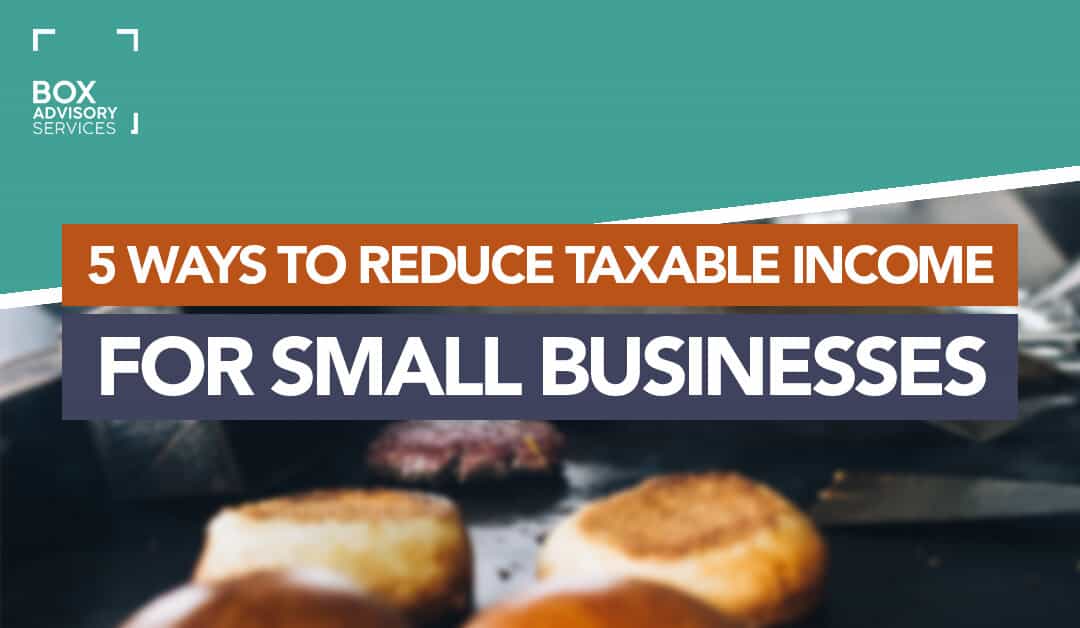
BY
|
5 Simple Ways to Reduce Taxable Income For Small Businesses
Given that every cent counts in the current distressed market, as a small business owner, you’re going to want to figure out how to reduce taxable income for your business.
According to a recent report by the Australian Tax Office (ATO), with over four million small businesses in Australia, they play a crucial role in the economy.
To demonstrate their importance, the ATO provides small businesses with several tax breaks. And a key way of reducing your taxable income is to take advantage of these tax breaks.
For example, one of the ways in which you can pay less tax and maximise the tax deductions for your small business is through the simplified small business depreciation rules.
But what is small business depreciation? What other tax breaks are available? How do you know if you qualify? And how is the Australian Government helping small businesses through the economic hardship caused by COVID-19?
To help answer all your questions, we’ve put together a list of a few ways your small business can reduce its taxable income.
What Is a Small Business Entity?
Before delving into how to reduce taxable income, it’s necessary that you determine whether your business is considered a small business entity.
For tax purposes, whether a business is considered a small entity or not, is dependent on its annual aggregated turnover.
To access the various small business tax breaks, your business must have an annual aggregated turner of:
- $10 million (from 1 July 2016 onwards); or
- $2 million for the previous income years

5 Ways To Reduce Taxable Income
Here are a few ways you can implement small business tax-saving strategies.
1. Claim Small Business Depreciation
As a small business, you should ensure that you are taking advantage of the benefits of claiming depreciation as it’s a significant tax-deductible expense.
To help make the process of claiming tax deductions simpler, the ATO introduced simplified depreciation rules for small businesses.
The simplified small business depreciation rules include:
- instant asset write-off;
- and general small business pool
Instant Asset Write-Off
Under this rule, you can claim a small business tax deduction immediately for the cost of the business-use portion of an asset, in the same year that you first used it or installed it.
The instant asset write-off can be used for a variety of new and second-hand assets, provided that the cost of each asset is less than the relevant threshold.
While the threshold has changed over the years, in response to the effects of COVID-19, the ATO made its most significant change yet.
From 6 October 2020 to 30 June 2022:
- businesses with a turnover of up to $5 billion can now immediately claim a depreciation deduction for eligible assets as well as the full cost of improvements to existing assets, and
- the total cost of the asset can be claimed, meaning there is no threshold amount
This means that until 30 June 2022, this limitless instant asset write-off will override all other previous instant asset write-off thresholds.
Small Business Pool
The small business pool strategy allows small business owners to depreciate the value of their higher costing plant and equipment assets at an accelerated rate.
You can claim:
- a 15% deduction in the year that you started using the asset or installed it ready to be used; and
- a 30% deduction each year after the first year
Higher costing assets are those that generally cost more than the instant asset write-off, so while the limitless instant asset write-off is in effect, the small business pool is only used for businesses with turnover over $5 billion per year.
For more on small business depreciation, check out our guide to maximising small business depreciation.
2. The Backing Business Investment (BBI) Incentive
Along with the threshold changes in the instant asset write off scheme, the ATO has introduced the BBI Incentive to support business investment and economic growth following the effects of the COVID-19 pandemic.
Until June 2021, the incentive allows business owners to claim accelerated depreciation deductions on new (first-held) depreciating assets if their business turnover is less than $500 million.
Businesses using the small business depreciation rules can claim 57.5% of the asset’s total cost in the first year of its use. It can then be added to the general small business pool in which the depreciation deduction will be calculated at 30% for the following years.
3. Prepay Some of Your Expenses
If you can pay some of your business expenses in advance, you won’t have to worry about paying them the next year, and you can claim them as a tax deduction in the current year.
Common expenses that you can prepay, include:
- office supplies;
- marketing expenses;
- rental payments;
- vehicle expenses;
- subscriptions; and
- insurance
Note, however, if you do opt to prepay some of your tax-deductible expenses, the prepaid amount should not exceed twelve months.
4. Write Off Bad Debts
If you aren’t able to retrieve debt from one or more of your customer’s accounts, you can possibly write these debts off and reduce your taxable income.
Bad debts can range from:
- customer credit accounts; and
- customer loans; to
- employee loans
Before you are able to write off customer debt, you’ll have to:
- communicate to the debtor about their outstanding payments (and keep all records of the communication);
- send follow-up reminder notices;
- determine their financial position and whether they are likely to pay their debt; and
- taken all necessary debt recovery steps to retrieve the debt
If, after following through with all the above, you can prove that you’re not able to retrieve payment for their outstanding account, you can write off the debt and claim this as a tax deduction.
5. Minimise Tax on GST (Goods and Services Tax)
Are you paying goods and services tax on an accrual basis? If so, you may want to consider paying GST on a cash basis to maximise cash flow and minimise tax.
On an accrual basis, you land up paying GST when you are invoicing for your goods or services. Depending on whether your payment terms are 30 days, 60 days or more, you are potentially paying tax even before receiving payment for your goods or service.
Whereas, on a cash basis, GST is paid when you have received payment into your bank account.
Example:
Noel, a graphics designer at a small firm in Cronulla, has recently engaged with a new client to offer their design services.
The total cost of the project amounts to $110,000 which Noel has offered on a 60-day payment term.
Because the graphic design firm pays on an accrual basis, they are going to have to pay $10,000 in goods and services tax before even receiving full payment for the $110,000.
Given the current market, every cent counts, and that’s $10,000 less in cash that could be possibly used on business needs if they are having cash flow issues.
Key Takeaways
The ATO offers small business owners various tax breaks that you should definitely consider taking advantage of when it comes to determining how to reduce taxable income for your business.
Along with the existing tax breaks, the Australian Government recently made some amendments to soften the economic hardship caused by the COVID-19 pandemic.
For example, the instant asset write-off now covers a broader range of businesses, and the BBI Incentive was introduced to accelerate depreciation deductions for small business pools.
However, there’s no one-size-fits-all strategy when it comes to reducing your business’s taxable income.
According to the ATO, 74% of Australian tax returns are lodged with a tax agent. In most cases, getting provisional advice will not only save you time, but they will also be able to guide you on how to reduce taxable income.
At Box Advisory Services, our small team of experienced accountants can help you navigate through putting together your tax reduction plan as well as preparing your tax return.
To find out how we can help you, book in a free consultation with us to assess your situation.
Sign up to our monthly newsletter where we share exclusive small business and contractor advice!
Disclaimer:
Please note that every effort has been made to ensure that the information provided in this guide is accurate. You should note, however, that the information is intended as a guide only, providing an overview of general information available to contractors and small businesses. This guide is not intended to be an exhaustive source of information and should not be seen to constitute legal or tax advice. You should, where necessary, seek a second professional opinion for any legal or tax issues raised in your business affairs.



